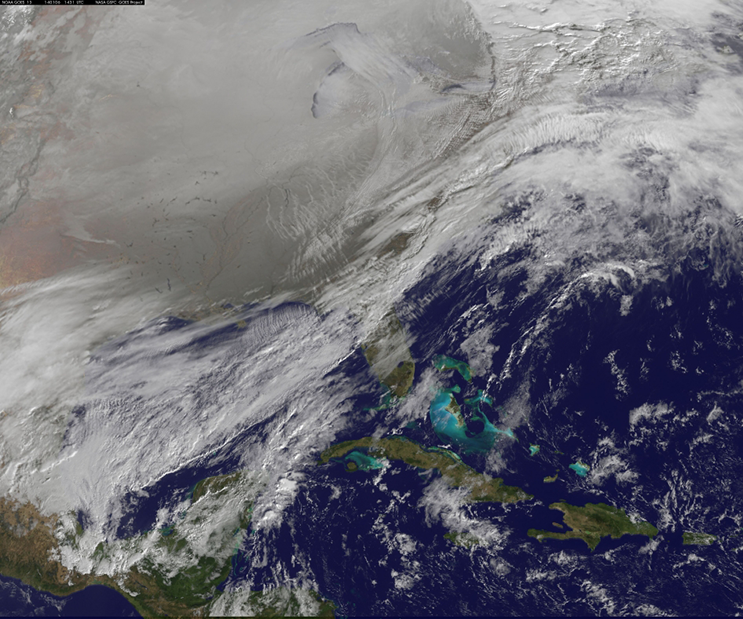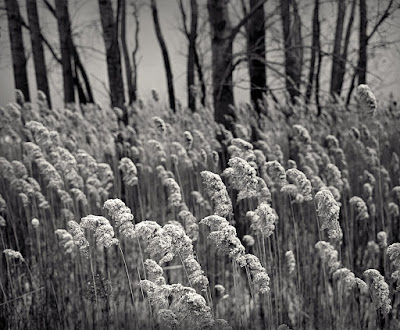For most people it seems photography is something that takes place at eye level. It's almost an ideal - the camera as an extension of the eye. So it is that the vast majority of cameras made over the last several decades have been designed to use by being held up to the eye. In this way photographers can expect to photograph the world the way they naturally experience. The thing is, sometimes the whole point of photography is to see the world in new ways, to find in the world of familiar experience aspects of the unfamiliar. While cameras designed to mirror the way we look at the world everyday may be the norm, it doesn't have to be that way, which is probably why I, like so many other photographers, have become a fan of the waist level finder.
These days cameras with a waist level finder, or WLF, are an uncommon enough phenomenon that I should probably take a moment and make sure everyone is clear on what I'm talking about. In the most general terms if a photographer has to look down at the top of the camera to frame up the image this is called waist level viewing. camera is designed such that the photographer frames up the scene by looking down at the camera to view the image this would be a waist level finder. In the years after George Eastman brought photography to the masses waist level viewing was common in the cameras of the day by virtue of mirrored viewfinders such as you will find in nearly any old box camera. These offered a handy reference for roughly what would appear in the image but the straight-through viewing of a view camera or a rangefinder were employed when some aid to focusing was required. The waist level viewfinder photographers from the mid 20th Century on came to know are the natural result of the introduction of reflex cameras, twin lens reflex (TLR) and single lens reflex (SLR). In a reflex camera the image from the lens is redirected by a mirror to a focusing screen at the top of the camera. A TLR uses a separate lens matched to the primary taking lens, while an SLR mirror redirects the image from the taking lens for focusing then flips out of the way during the exposure. A waist level finder is simply an aid to viewing the image on the reflex focus screen directly by providing a shade for the screen that normally collapses out of the way when not in use, and which will often incorporate a flip up magnifier to aid with critical focus.

But while waist level finders are a mainstay of TLRs, they are rare in 35mm SLRs and to my knowledge unheard of in DSLRs (which after all, are just SLRs that happen to have digital sensors). Instead, a special five sided prism, a pentaprism, is employed, redirecting the image to the back of the camera, correcting as it does the mirror reversed image that occurs when a reflex focus screen is viewed directly. Since this viewing arrangement using a pentaprism allows the photographer to bring the camera to their eye, effectively looking right through it from the back, these are often referred to as eye-level finders. Whatever you call them they are a built in feature on the vast majority of 35mm SLR cameras, meaning that despite their reflex design this class of camera adopts a straight through, "extension of the eye" viewing style more natural to other camera designs such as rangefinders.
But while waist level finders are a rarity in the 35mm SLR world, this is not so when it comes to my usual weapon of choice, the medium format SLR. Once the mainstay of professional wedding and portrait photographers these cameras typically feature a more modular design that usually includes an interchangeable viewfinder system, While photographers could opt for a more expensive, and therefore often considered premium eye-level finder, this did not automatically make them everyone's first choice. For a variety of reasons waist level finders are a much more practical option with medium format cameras than is the case with 35mm. To begin with the focus screen is physically larger, matching the negative size, which makes direct viewing much more comfortable. A definite weakness of the WLF is that they are rather awkward when the camera is turned sideways for vertical shooting, but many medium format cameras are either designed for square formats where there is no vertical, or feature rotating film magazines that allowed a switch between vertical and horizontal shooting without the need to rotate the entire camera. Thus while some saw the more economical waist level viewers as an entry level option many photographers stuck with them throughout their careers despite having the option to easily upgrade.
 |
Vivian Maier and her Rolleiflex. The kids today could
learn a thing or two about taking selfies. |
There are a few reasons commonly sited for this. In discussions of the work of Vivian Maier for example it's frequently conjectured that her work benefited from the fact that that the waist level finder of her Rolleiflex camera made it less obvious to her subjects that they were being photographed since she was looking down at her camera, diminishing the sense that they were being observed. That's all well and good for a street photographer but given my bent for landscape subjects it's hardly a reason for me to be a WLF fan. In simplest terms for me it comes down to the way this kind of viewfinder simplifies and encourages the use of lower camera angles, everything from chest level all the way down to the very ground itself.
From our usual eye level vantage point of perhaps 1½ to 2 metres our attention is most easily drawn to things at a similar height, most especially other people which is fair enough, but it does make it easy to overlook what's going on closer to the ground. There's a lot of interesting things to be found near the ground, almost (so the joke goes) as if they were drawn there by some mysterious force; rocks, seashells, sun bleached antelope skulls, creepy old dolls, forgotten and discarded, once loved by a little girl now in her mid thirties. And yes, we could photograph all of these things by standing over them an shooting down as they lay at our feet, but I hardly think I need to explain why this approach is so unlikely to lead to anything that is interesting photographically. It's just a patch of ground with something laying on it.
Get down closer to the level of that whatever it is though and everything changes. There is context, meaning, story. That seashell stands alone against the expanse of sand water and sky from whence it came, the unfortunate antelope amongst the scraggly vegetation struggling up from the cracked dry earth, a victim of its harsh surroundings. That creepy doll that somehow found its way to the base of a knotted old tree in the sinister gloom of a misted wood where.. my god, did I just see it move?
You could of course photograph all of these things using a camera that has some sort of straight through camera. For the lucky there will always be a spot of dry ground to shoot from, and for the intrepid one can simply endure going belly down into the wet, the muck, the unidentified vegetation that to the best of recollection isn't exactly what poison ivy is supposed to look like and that bit of a mound that, if it's home to fire ants, you'll know soon enough. But even granting such acts of machismo might be your thing that eye level finder is hardly drawing your attention groundward, inviting you to explore the world from a new point of view and encouraging you to explore the visual world from this new perspective. For that, there's the waist level finder.
Of course my weapon of choice is the traditional medium format SLR where this style of viewfinder really shines. There are WLF alternatives for some 35mm SLRs. For vintage aficionados they were sometimes standard in early SLRs of the 1940's and 50's, but if you're after something more recent all but the most current members of Nikon's F series have interchangeable viewfinders and while uncommon there are WLFs for these cameras out there. Alternatively however a right angle finder that fits over the eyepiece of the prism viewfinder is available for a greater variety of 35mm cameras giving many of the same benefits while rotating versions eliminates the limitation of horizontal only shooting. These of course can also be the ticket if you shoot with a DSLR, though you can bet that if I were a digital shooter I'd chose a camera with one of those nifty articulated live view screens.
Admittedly there are times when waist level finders are not the ideal thing. They are good up to about chest level but no higher, and sometimes either to get the needed perspective of just to shoot over a fence this is a severe limitation. Once or twice in a pinch I have turned the camera sideways, standing at a right angle to the subject, just to be able to use it at eye level. For my Mamiya and Hasselblad systems however I have prism finders that can be swapped in for the waist level versions. These might actually get used, if I'm being generous, about 5% of the time and if I leave them in place after using them I inevitably replace them with the usual waist level finder in the next shooting situation because the eye level view just isn't working for me.
 |
| The 'Blad with waist level finder attached, optional prism finder to the right is ready when needed. |
There are times when 35mm would do just fine but I still bring the medium format gear not because the bigger negative is suddenly important to me, but because I know the eye level finders I have on all my Nikons will almost certainly bring me to a choice between belly crawling on some questionable terrain or not getting the shot I want. And while I'm fully kitted out for 4x5 I'll still nearly always go for the medium format gear bag on the way out no so much to avoid the extra heft (though there's that) or the extra expense (thought there's that) but because, again, there's that straight through viewing. There are things on my photographic horizon (to be discussed in future episodes I'm sure) that have me thinking hard about shooting those big negatives more often. There are right angle viewers available for 4x5 cameras... It seems the wish list never quite ends.


























